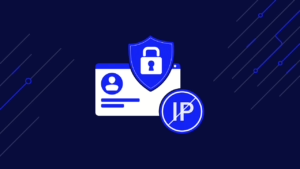With blockchain explorers, navigating the transactions linked to your wallet becomes a breeze. Each type of blockchain is paired with its specific explorer tool. For instance, Bitcoin enthusiasts often turn to Blockchain.com, while Ethereum users rely on Etherscan. In this discussion, we will delve into the essentials of blockchain explorers—how they function and which ones stand out as the premier choices for those investing in cryptocurrencies.

What is the value of a blockchain explorer?
It serves as a gateway to understanding the intricate world of blockchains such as Bitcoin and Ethereum. These networks are built with transparency in mind, allowing anyone to access information about transactions and wallet balances. However, navigating cryptocurrency data can often feel overwhelming due to its complexity. That’s where blockchain explorers come into play—they simplify this information for users.
Imagine you’re trying to track your cryptocurrency holdings or review past transactions; a blockchain explorer can be incredibly beneficial in answering questions like: What is the current balance in my wallet? What previous transactions have I completed? How much did I spend on gas fees for those transactions? And most importantly, has my transaction been successfully confirmed by the network?

In essence, these tools empower users by making blockchain data accessible and comprehensible, transforming what could be a daunting task into an effortless experience.
Using a blockchain explorer
Navigating a blockchain explorer is quite simple, and let’s take Blockchain.com as our reference point. To begin your exploration, input the transaction ID or wallet address you’re interested in into the search bar. For this demonstration, we will focus on a Bitcoin wallet. Once you’ve entered the Bitcoin wallet address, you’ll gain access to various details about it. This includes crucial information such as the wallet’s balance, the total number of transactions conducted, and its transaction history.
At the top of the page, you’ll find a summary that provides an overview of the wallet’s total balance along with its overall cryptocurrency holdings. As you scroll down to the lower section, you’ll encounter a comprehensive list of all past transactions associated with that wallet. Here, you can find key details, including when each transaction occurred, its fair market value at that time, and any applicable fees incurred.
Moreover, platforms like Blockchain.com often feature a Charts or Analytics tab that enables users to track how the wallet’s value has fluctuated over time. This functionality allows for deeper insights into cryptocurrency trends related to that specific wallet.
Blockchain explorers serve as vital tools for navigating the publicly accessible data layer of blockchains, simplifying the process of examining wallets, transactions, and blocks. They provide real-time information about blockchain activities, including historical data that stretches back to the very first block of the original blockchain. If you’re curious about how to profit from a blockchain explorer, these platforms can be invaluable for conducting on-chain analysis—essentially leveraging cryptocurrency data to forecast future price trends.

How Explorers Help Analysts Forecast Market Moves
Let’s explore some methods analysts employ to make predictions using blockchain explorer data. One straightforward approach is to monitor transaction volume; by observing whether this volume is increasing or decreasing, you can gain insights into market activity. This information is typically readily available on a blockchain explorer’s homepage.
Another aspect worth analysing is whale behaviour—whales are investors who possess significant amounts of cryptocurrency. Analysts often delve into on-chain data to discern whether these large holders are buying, selling, or maintaining their positions in various cryptocurrencies.

Additionally, understanding holding patterns through on-chain analysis reveals what types of investors are keeping their crypto assets. For instance, research has indicated that Bitcoin (BTC) tends to be held by long-term investors—those who are unlikely to sell their holdings anytime soon.
However, it’s essential to recognise that utilising blockchain explorers for in-depth analysis can feel daunting at times since they generally allow you to examine one wallet at a time. To alleviate this challenge and gain a broader perspective on user metrics across an entire blockchain network, platforms like Dune Analytics offer dashboards that aggregate user data effectively.
Leading Blockchain Explorers
Each blockchain has its dedicated explorer that works best for it. Here’s a list of the top explorers for various blockchains:
– Bitcoin: Blockchain.com
– Ethereum: Etherscan
– Ripple: XRPScan
– Solana: SolScan
– Arbitrum: Arbiscan
– Polygon: Polygonscan
– Binance Smart Chain: BscScan
– Dogecoin: Dogechain
– Cardano: CardanoScan
– Avalanche: SnowTrace
– Tron: Tronscan
– Algorand: AlgoExplorer
Blockchain serves as an excellent multi-chain explorer.
How to locate unconfirmed transactions using a blockchain explorer
Blockchain explorers serve as valuable tools for checking the status of your transactions, specifically to see if they remain unconfirmed or not yet validated by the blockchain. To do this, follow these steps: First, obtain your transaction ID (which can typically be found in your wallet). Next, enter this ID into the blockchain explorer. The explorer will then display the current status of your transaction, indicating whether it is confirmed, pending, or has failed.

Are blockchain explorers secure?
Yes, blockchain explorers are secure to use. Your public wallet address is safe to share since all information associated with it is already publicly accessible. A hacker can only access your wallet through your private keys. Therefore, it’s crucial to store your private keys securely to prevent unauthorised access.
Maxthon’s Blockchain Features
1. Introduction to Maxthon as a Blockchain Browser
Maxthon is not just an ordinary web browser; it has evolved to integrate blockchain technology into its core features. As a blockchain browser, it allows users to navigate decentralised applications (dApps) and explore various blockchains seamlessly.
2. Installation Process
To get started, download the Maxthon browser from its official website or your preferred app store. Then, follow the installation instructions for your operating system—whether it’s Windows, Mac, or mobile devices.
3. Setting Up Wallets
Once installed, you will need to set up a cryptocurrency wallet within the browser. Navigate to the wallet section in the settings menu and follow on-screen prompts to create or import a wallet securely.

4. Accessing dApps
After setting up your wallet, you can access a variety of dApps directly through Maxthon. Use the integrated search feature designed explicitly for blockchain applications to find and explore projects that interest you.
5. Enhanced Security Features
Maxthon prioritises user security when browsing blockchain networks. It includes built-in VPN services and ad-blockers, ensuring that your data remains private and secure while interacting with various dApps.
6. User-Friendly Interface
Expect a clean, intuitive interface optimised for both novice users and experienced crypto enthusiasts alike. The layout makes navigation simple so you can focus on engaging with decentralised platforms without unnecessary complications.
7. Regular Updates
Keep an eye on regular updates from Maxthon that improve performance and introduce new features explicitly tailored for blockchain interactions. Staying updated ensures that you enjoy enhanced functionality and security at all times.
8. Join the Community
Finally, consider joining Maxthon’s online community forums or social media channels to share tips, ask questions, and learn more about effectively using the browser in your blockchain journey.
